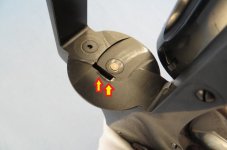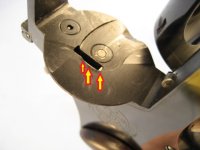Absalom
SWCA Member, Absent Comrade
My question is does anyone have a wrist strong enough to apply roughly 30,000 psi to the steel to a vintage S&W? If not, chances are that nothing will happen. ......
Why not? Not sure, but maybe out of respect to those who abhor the practice. Technically, there should be no issues with doing so, but due to the fact that parts can break for any reason, why give someone another excuse to complain about your practice?
It's not even the strength of the wrist, as you're not applying direct force to the part. All you apply is the force generated by the centrifugal forces of your wrist rotation moving the mass of the cylinder, a fraction of the power with which you could slam the cylinder shut directly with a hand push.
Your second point is a good guide for one's behavior in public. Why risk unnecessary aggravation? Every hobby has its superstitions. In Germany you won't be invited on a hunt again if you step over a dead animal afterwards. Why? Who knows; tradition ...
On the other hand, questioning and discussing the sense and in this case the nonsense of a widespread belief in a forum designed for that purpose, as our friend sigp220.45 has done here, is always a worthy endeavor.




